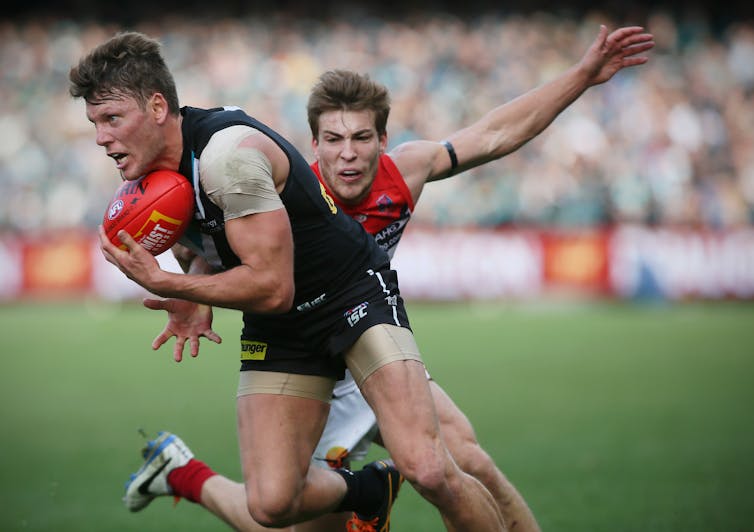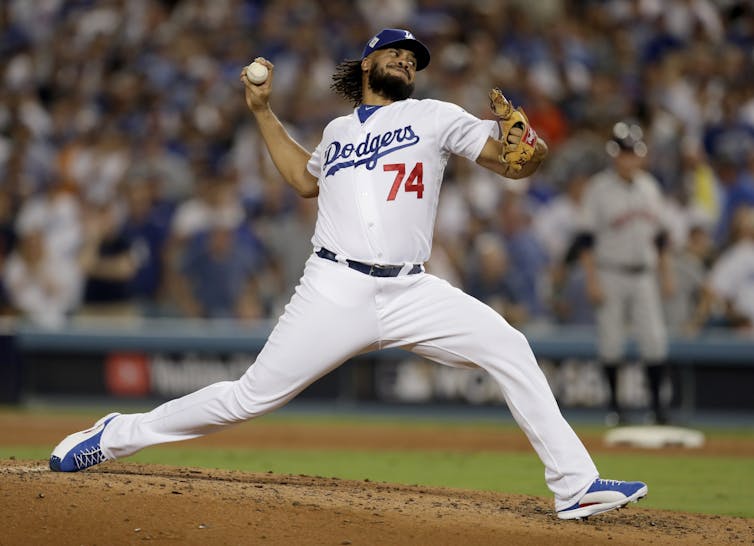How and why economics is taking over sports
- Written by Tim Harcourt, J.W. Nevile Fellow in Economics, UNSW
In this series we’re looking at how the economics of sports is doing away with hunches and intuition. Using data and research to evaluate players, strategies and even leagues.
If you look closely at your favourite sport nowadays, it’s hard to miss the influence of economics. It’s evident from the way players are drafted or how much they are paid, through to individual coaching decisions, and even strategic shifts across entire leagues.
This has been particularly driven by the rise of game theory in economics. Game theory uses mathematical models to figure out optimal strategies, such as what pitches a baseball pitcher should throw, or whether American Football teams should pass more.
Sport lends itself to economics and game theory because players, coaches and agents act similar to the hypothetical rational decision-makers in economic models.
The economics of professional sport
If you’ve seen or read Moneyball you’ll understand how economics can be used to put together a team. This is the true story of Billy Beane, the former general manager of the Oakland Athletics baseball team. Beane became famous for using economic ideas to identify undervalued players.
Baseball scouts and agents often focused too much on unimportant factors like how hard someone could hit a ball. Using advanced statistics Billy Beane could identify players who were undervalued by his competitors, and play them in ways that made best use of their strengths.
Read more: Shorter or longer tennis matches: what’s the right balance?
In basketball, Robert D. Tollison is largely behind the explosion of three point shooting in the National Basketball Association. Tollison’s research identified that even though three pointers are less accurate than other shots, over the course of a game and season it makes sense to take more three pointers.
In some cases economists have been hired to solve specific problems. For instance the AFL was worried about clubs “tanking” (purposefully losing) to get favourable draft picks (not mentioning any names, Melbourne).
So the AFL asked Melbourne University Economics Professor Jeff Borland to come up with an objective measure of club performance (based on team performance, win-loss ratios, previous finals appearances and injuries).
 The AFL tried to use economics to fix its tanking problem.
AAP
The AFL tried to use economics to fix its tanking problem.
AAP
Why are academics getting into sports?
For teams and leagues, the incentive to implement economic ideas is financial. American Football’s Superbowl attracts 111 million viewers each year in the USA alone.
In Australia the broadcast rights for the AFL and NRL are each around A$2 billion. And this doesn’t even count the merchandise that can be sold to fans.
But the academic economists are often driven by something else - analysing sports can shed light on fundamental economic questions, particularly about the impact of incentives, labour market discrimination on race and gender lines, and competition.
For instance, discrimination against non-white athletes like Hank Aaron in Major League Baseball led to a lot of interesting research about the economics of discrimination in the workplace.
Similarly, the rapidly increasing player salaries in the English Premier League has led to a lot of analysis of winner-take-all markets. It has also led other sports leagues to implement salary caps and restrictions on the draft.
 Economic analysis suggests pitchers should throw more slow pitches.
AAP
Economic analysis suggests pitchers should throw more slow pitches.
AAP
Read more: Big data can give athletes the winning edge
But the economics of sports aren’t just for academics, teams and leagues. The last few years have seen a few popular books that explain how fans can also get in on this movement.
For example, there’s Soccernomics by Simon Kuper and Stefan Syzmanski. This book applies statistics, economics, psychology and game theory to popular questions about game. What country likes soccer the most? Norway. What country has performed better at the World Cup than they should have? England (despite their reputation).
There’s also Franklin Foer’s How Soccer Explains the World, which uses soccer to explain topics as diverse as globalisation, oligarchy and antisemitism.
Lawrence Ritter, an eminent economist, is arguably more famous for his book The Glory of Their Times about the early days of American’s Major League baseball. There has probably been no better book on the sociology of business and the labour market of the United States in the 1920s.
The growth in sports economics is likely to continue, as the data gets better and teams compete for a strategic edge. In economic terms, the global sports industry really is more than a game.
Authors: Tim Harcourt, J.W. Nevile Fellow in Economics, UNSW
Read more http://theconversation.com/how-and-why-economics-is-taking-over-sports-88574




